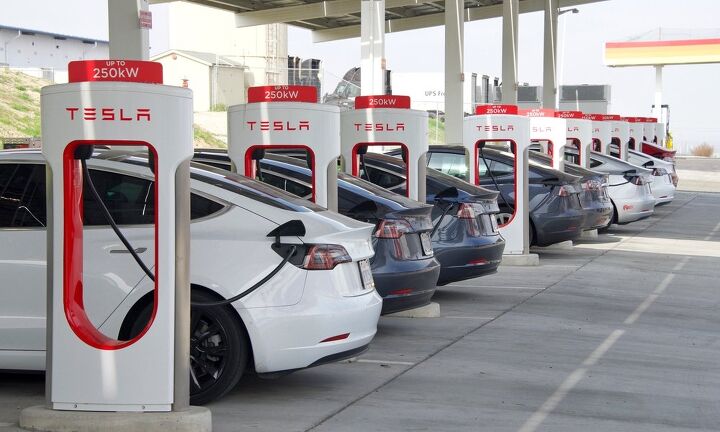Understanding the Role of NACS in the Future of EV Charging
The North American Charging Standard (NACS) has played a central role in electric vehicle (EV) charging since 2012. Initially developed by Tesla, NACS is known for its dual capability of supporting both Alternating Current (AC) and Direct Current (DC) charging via a compact plug design. This versatility enables the system to deliver up to 1 megawatt (MW) of power for DC charging, catering effectively to the needs of EVs.
Tesla's influence in the EV market in North America has contributed to NACS becoming the predominant charging standard. This is largely attributed to its widespread use in Tesla vehicles and the extensive network of Tesla charging stations throughout the United States.
Standardization and Compatibility Efforts
In July 2023, the Society of Automotive Engineers (SAE International) embarked on an initiative to standardize NACS as SAE J3400. This effort focuses on codifying elements such as plug connections, charging speeds, reliability, and cybersecurity. The move towards standardization is pivotal for achieving uniformity across EV charging systems.
Other existing standards in the EV charging domain include the J1772 for Level 1 and Level 2 AC charging, and the Combined Charging Standard (CCS) for DC fast charging. Notably, the CHAdeMO standard is still used for certain models like the Nissan Leaf, despite being gradually phased out.
Wider Adoption Among EV Manufacturers
Tesla's strategy to open up NACS to other companies has led to its acceptance by several leading EV manufacturers. Prominent automakers such as Ford, General Motors, Rivian, Volvo, Polestar, and Mercedes-Benz have plans to integrate NACS charge ports in their EV models beginning in 2025. This transition also entails providing adapters for existing EV models to access Tesla's Supercharger network.
While some manufacturers are in the process of evaluating NACS for potential adoption, others have not yet disclosed their plans regarding this standard.
Implications for Public EV Charging Networks
Although NACS is gaining traction, the CCS standard remains crucial in public EV charging networks, especially given the requirements for federal infrastructure funding. As a result, the U.S. EV charging landscape is expected to accommodate both NACS and CCS standards concurrently for the foreseeable future.
Network operators like EVgo are adapting by adding NACS connectors to their stations, ensuring compatibility across different standards. Moreover, EV manufacturers that are adopting NACS are facilitating access to Tesla's Supercharger network through both in-vehicle support and adapters.
Enhancing EV Adoption and Charging Infrastructure
The wider acceptance of NACS, together with Tesla's integration of CCS support, is set to substantially expand the EV charging infrastructure. This development is crucial in addressing concerns such as range anxiety and could potentially hasten consumer adoption of electric vehicles.
Conclusion
The integration of NACS by various manufacturers, along with its simultaneous existence with the CCS standard, indicates a significant transformation in the EV charging landscape. Despite the challenges in ensuring interoperability between different standards, the overarching advantage is the increased availability and user-friendliness of EV charging infrastructure. This evolution is instrumental in creating a more inclusive and accessible electric vehicle ecosystem.
This article was co-written using AI and was then heavily edited and optimized by our editorial team
More by TTAC Staff
Latest Car Reviews
Read moreLatest Product Reviews
Read moreRecent Comments
- Rover Sig 2021 Jeep Grand Cherokee Limited, like my previous JGC's cheap to keep (essentially just oil, tires) until recent episode of clunking in front suspension at 50K miles led to $3000 of parts replaced over fives visits to two Jeep dealers which finally bought a quiet front end. Most expensive repair on any vehicle I've owned in the last 56 years.
- Bob Hey Tassos, have you seen it with top down. It's a permanent roll bar so if it flips no problem. It's the only car with one permanently there. So shoots down your issue. I had a 1998 for 10 years it was perfect, but yes slow. Hardly ever see any of them anymore.
- 3-On-The-Tree 2007 Toyota Sienna bedsides new plugs, flat tire on I-10 in van Horn Tx on the way to Fort Huachuca.2021 Tundra Crewmax no issues2021 Rav 4 no issues2010 Corolla I put in a alternator in Mar1985 Toyota Land Cruiser FJ60 280,000mi I put in a new radiator back in 08 before I deployed, did a valve job, new fuel and oil pump. Leaky rear main seal, transmission, transfer case. Rebuild carb twice, had a recall on the gas tank surprisingly in 2010 at 25 years later.2014 Ford F159 Ecoboost 3.5L by 80,000mi went through both turbos, driver side leaking, passenger side completely replaced. Rear min seal leak once at 50,000 second at 80,000. And last was a timing chain cover leak.2009 C6 Corvette LS3 Base, I put in a new radiator in 2021.
- ChristianWimmer 2018 Mercedes A250 AMG Line (W177) - no issues or unscheduled dealer visits. Regular maintenance at the dealer once a year costs between 400,- Euros (standard service) to 1200,- Euros (major service, new spark plugs, brake pads + TÜV). Had one recall where they had to fix an A/C hose which might become loose. Great car and fun to drive and very economical but also fast. Recently gave it an “Italian tune up” on the Autobahn.
- Bd2 Lexus is just a higher trim package Toyota. ^^


































Comments
Join the conversation